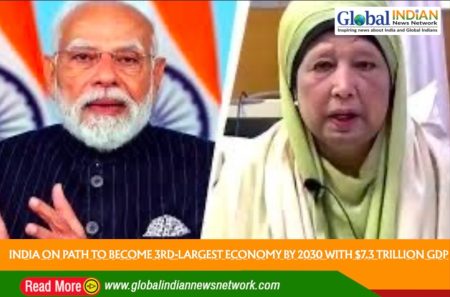
Gender equality has evolved from being solely a moral responsibility to a key economic strategy. Global organizations like the IMF and World Bank now recognize women’s involvement in the economy as a core factor for national prosperity. Women’s participation enhances productivity, reduces poverty, and fosters more inclusive growth.
Since women represent half the potential workforce, their exclusion from financial systems and markets leads to major economic inefficiencies. Beyond justice, their inclusion brings systemic gains that benefit generations. Recognizing this, India has moved from treating women as passive recipients of aid to actively investing in their capabilities.
The Indian government’s development programs now focus on building agency rather than only delivering benefits. Flagship schemes like Jan Dhan Yojana, Ujjwala, and Swachh Bharat aim to remove foundational barriers—such as lack of banking, clean energy, and sanitation—thus empowering women from the ground up.
Among the most transformative tools is the Pradhan Mantri MUDRA Yojana (PMMY), which offers collateral-free loans to micro-enterprises, heavily dominated by women. The initiative not only provides credit but also redefines the state’s relationship with its citizens—positioning women as potential business leaders rather than aid dependents.
Historically, Indian women have faced intense obstacles accessing capital due to social biases and lack of information. Even profitable female-run microbusinesses stayed small due to capital shortages. PMMY tackles these limitations by lowering transaction costs and expanding access through microfinance channels.
This access has catalyzed a shift—from unpaid labor to thriving microenterprises like tailoring shops, food stalls, and agri-businesses. The transformation boosts women’s financial independence and reshapes household dynamics by increasing their control over resources.
Beyond income, the ripple effects are powerful. Women-run businesses often employ others, especially women, creating a multiplier effect. Exposure to banking and digital tools also improves financial literacy and resilience. Research confirms that women tend to reinvest in family well-being—especially children’s education and health—strengthening human capital.
With nearly 68% of PMMY loans going to women and loan disbursement growing at a CAGR of 13% since FY16, the shift is clear. Women are saving more, borrowing smartly, and fueling MSME growth across states.
Now, the focus should evolve to growth and scale. By helping women progress to higher loan brackets and combining credit with skills training and market access, PMMY can unlock the next wave of gender-driven growth. India is witnessing a quiet economic revolution—led by its women, one Mudra loan at a time.












